Kenyi cichlid - Pseudotropheus lombardoi
Scientific name: Pseudotropheus lombardoi
Common name: Kenyi cichlid
Family: Cichlidae
Usual size in fish tanks: 13 - 16 cm (5.12 - 6.3 inch)
014
Recommended pH range: 7.5 - 8.9
Recommended water hardness: 12 - 25°N (214.29 - 446.43ppm)
0°C 32°F30°C 86°F
Recommended temperature range: 23 - 27 °C (73.4 - 80.6°F)
The way how these fish reproduce: Spawning
Where the species comes from: Africa
Temperament to its own species: aggressive/territorial
Temperament toward other fish species: aggressive/territorial
Usual place in the tank: Bottom levels
Origin
The Kenyi Cichlid (Pseudotropheus lombardoi) is endemic to Lake Malawi in the East African Rift Valley. This lake is known for its diverse and colorful cichlid population, making it one of the most vibrant freshwater ecosystems. Kenyi Cichlids inhabit the rocky shorelines of Lake Malawi, where they establish territories among the crevices and caves. These rocky environments provide shelter, breeding grounds, and an abundant food source, primarily in the form of algae. Understanding their natural habitat helps aquarists create a suitable tank environment that promotes their natural behaviors and well-being.
Tank Setup and General Care
Kenyi Cichlids are highly territorial and aggressive, especially males. To mitigate aggression, they should be housed in a spacious aquarium with plenty of hiding spots. The minimum recommended tank size is at least 200 liters (45 Imperial gallons), but larger tanks are preferable. Decorate the aquarium with piles of rocks to create caves and crevices, which help reduce aggression by allowing each fish to establish its own territory. A sandy substrate is recommended to mimic their natural environment and provide a comfortable habitat.
Given their size and high activity level, Kenyi Cichlids produce a significant amount of waste. Therefore, efficient filtration is crucial to maintain water quality. Perform regular water changes (at least 30% weekly) to keep nitrate levels in check and ensure a healthy environment. Water parameters should be maintained within the ideal range: a pH of 7.5-8.9, hardness (dGH) of 12-25°N, and a temperature between 23-27°C (73.4-80.6°F). Due to their aggressive nature, only one male should be kept with several females to minimize territorial disputes.
Food and Feeding
Kenyi Cichlids are omnivorous but have a strong preference for a herbivorous diet, primarily algae. In captivity, provide a varied diet that includes high-quality spirulina flakes, blanched vegetables such as spinach and zucchini, and algae wafers. While they may accept some meaty foods like bloodworms and daphnia, these should be given sparingly to avoid digestive issues. Avoid feeding them red meats or foods high in fats, as they cannot efficiently process these and may develop health problems.
Feed the Kenyi Cichlids once or twice daily, offering only what they can consume within a few minutes to prevent overfeeding and water quality issues. Including plenty of plant-based foods helps mimic their natural diet and keeps them in optimal health.
Sexing
Sexing Kenyi Cichlids can be challenging in their juvenile stage, as both males and females are initially bright blue with vertical stripes. However, as they mature, males undergo a dramatic color change to a brilliant yellow, while females retain a lighter blue coloration with visible vertical stripes. This distinct sexual dimorphism becomes apparent as the fish reach sexual maturity, making it easier to differentiate between males and females. If you're planning to breed these cichlids, it's best to start with a small group of juveniles and separate them as their colors develop.
Breeding
Kenyi Cichlids are mouthbrooders, a common trait among mbuna cichlids. During breeding, the male establishes a territory, often choosing a flat rock or a specific area of the substrate as a spawning site. He will entice the female to lay her eggs at this site, after which he fertilizes them. The female then collects the eggs in her mouth, where they are incubated for about three weeks. During this period, she will refrain from eating to protect the developing fry.
After approximately three weeks, the female releases the fry when she senses it's safe for them to venture out. Initially, she may allow the fry to swim out for short periods while continuing to offer them protection. To avoid hybridization, it's best to keep Kenyi Cichlids in a species-only breeding tank. Provide plenty of hiding places for the fry once they are free-swimming to increase their chances of survival.
Lifespan
With proper care, Kenyi Cichlids can live up to 10 years in captivity. To ensure they reach their full lifespan, provide them with a well-maintained environment, a balanced diet, and monitor for signs of stress or illness. Regular water changes and maintaining stable water conditions are crucial for their longevity.
Short Description
The Kenyi Cichlid (Pseudotropheus lombardoi) is a visually stunning and dynamic addition to any cichlid aquarium. Juveniles start with a bright blue coloration, which transforms as they mature, with males turning a striking yellow. Despite their beauty, Kenyi Cichlids are known for their aggressive and territorial nature, particularly towards other males. They thrive in rocky, well-structured aquariums that replicate their natural habitat in Lake Malawi. When kept in appropriate conditions, these cichlids can provide an engaging display of natural behavior and vibrant color.
Pictures
Bought by aqua-fish.net from jjphoto.dk. One picture was provided by Tiffany.




 Thread-finned
Thread-finned 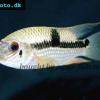 Acara
Acara  Yellow
Yellow  Patrick's
Patrick's  Blue
Blue  Green
Green 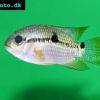 Acara
Acara  White
White  Compressed
Compressed 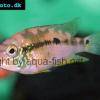 Pastel
Pastel  Midas
Midas  Red
Red  Bluemouth
Bluemouth  False
False 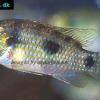 African
African  Agassiz's
Agassiz's  Banded
Banded 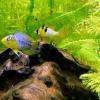 Yellow
Yellow  Cockatoo
Cockatoo  Blue
Blue  Blackstripe
Blackstripe  Highfin
Highfin  Redstripe
Redstripe  Threadfinned
Threadfinned  Macmaster’s
Macmaster’s 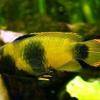 Panda
Panda  Norbert’s
Norbert’s 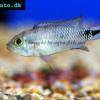 Blue
Blue  Thin-line
Thin-line  Three-striped
Three-striped  Viejita
Viejita 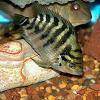 Flier
Flier  Archocentrus
Archocentrus  Convict
Convict  Seven
Seven  Spiny
Spiny  Oscar
Oscar  Sunshine
Sunshine  Chitande
Chitande  Firebird
Firebird  Midnight
Midnight  Lake
Lake  Sunshine
Sunshine  Aulonocara
Aulonocara  Nyasa
Nyasa 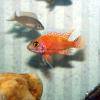 Ruby
Ruby  Grants
Grants  Aulonocranus
Aulonocranus  Chameleon
Chameleon  Benitochromis
Benitochromis  Orinoco
Orinoco  Yellow
Yellow 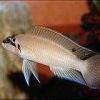 Brichard’s
Brichard’s  Guenther’s
Guenther’s  Southern
Southern  Cichla
Cichla 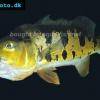 Peacock
Peacock  Chiseltooth
Chiseltooth  Bolivian
Bolivian  Red
Red  Many-pointed
Many-pointed  Jack
Jack  Red
Red  Three
Three 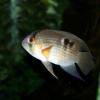 Keyhole
Keyhole  Azureus
Azureus  Red
Red  Jackson’s
Jackson’s  Crenicichla
Crenicichla  Honduran
Honduran  Blue-eye
Blue-eye  Afra
Afra 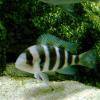 Frontosa
Frontosa  Slender
Slender  Malawi
Malawi  Chequerboard
Chequerboard  Checkerboard
Checkerboard  Malawi
Malawi  Ectodus
Ectodus  Tanganyika
Tanganyika  Canara
Canara  Green
Green  Rostratus
Rostratus  Pearl
Pearl 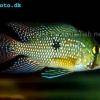 Geophagus
Geophagus  Yellowhump
Yellowhump  Suriname
Suriname  Redhump
Redhump  Red
Red  Dority’s
Dority’s  Argentine
Argentine 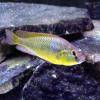 Burton’s
Burton’s  Victoria
Victoria 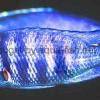 Haplochromis
Haplochromis  Jewel
Jewel  Banded
Banded 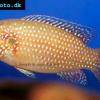 Lifalili
Lifalili  Lowland
Lowland  Texas
Texas  Pantano
Pantano  Severum
Severum  Banded
Banded 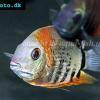 Severum
Severum  Rainbow
Rainbow  Parrot
Parrot  Chocolate
Chocolate  Brown
Brown  Marlieri
Marlieri  Golden
Golden  Striped
Striped  Masked
Masked 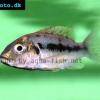 Konye
Konye  Blue
Blue  Trewavas
Trewavas  Electric
Electric  Dwarf
Dwarf  Redbreast
Redbreast  Lamprologus
Lamprologus  Gold
Gold 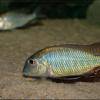 Greenface
Greenface 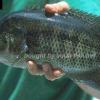 Mayan
Mayan  Aurora
Aurora  Blue
Blue  William’s
William’s 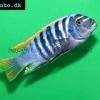 Zebra
Zebra  Malawi
Malawi  Blue
Blue 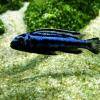 Blue
Blue  Mbuna
Mbuna  Parallel
Parallel  Purple
Purple  Flag
Flag  Bolivian
Bolivian  Ram
Ram  Basket
Basket 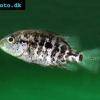 Haitian
Haitian  Zebra
Zebra  Striped
Striped  Neolamprologus
Neolamprologus  Brevis
Brevis  Fairy
Fairy 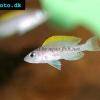 Neolamprologus
Neolamprologus  Cylindricus
Cylindricus  Hecq’s
Hecq’s  Neolamprologus
Neolamprologus  Lemon
Lemon  Mustax
Mustax  Daffodil
Daffodil  Six-bar
Six-bar  Five-bar
Five-bar  Marbled
Marbled 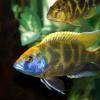 Giraffe
Giraffe  Blue
Blue  Sulphurhead
Sulphurhead  Wolf
Wolf  Jaguar
Jaguar  Blue
Blue  Marakeli
Marakeli  Madagascar
Madagascar  Pinstripe
Pinstripe  Pelmatochromis
Pelmatochromis  Kribensis
Kribensis 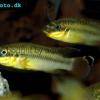 Striped
Striped  Red
Red  Deepwater
Deepwater  Fenestratus
Fenestratus  Nichols’
Nichols’  Southern
Southern  Bumble
Bumble  Demason’s
Demason’s  Slender
Slender  Red
Red  Mbuna
Mbuna  Malawi
Malawi  Powder
Powder  Altum
Altum  Angelfish
Angelfish  Angelfish
Angelfish 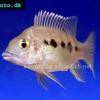 East
East  Juba
Juba  Earth
Earth 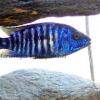 Electric
Electric  Azure
Azure 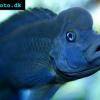 Lionhead
Lionhead  Discus
Discus  Blue
Blue  Red
Red  Zebra
Zebra  Brichard’s
Brichard’s  Blue
Blue  Firemouth
Firemouth  Zebra
Zebra  Yellow
Yellow  Blue
Blue  Dwarf
Dwarf  Blunthead
Blunthead 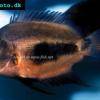 The
The  White
White  Twoband
Twoband  Fenestratus
Fenestratus  Window
Window  Tailbar
Tailbar  Black
Black  Redhead
Redhead 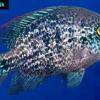 Oaxaca
Oaxaca  Xenotilapia
Xenotilapia